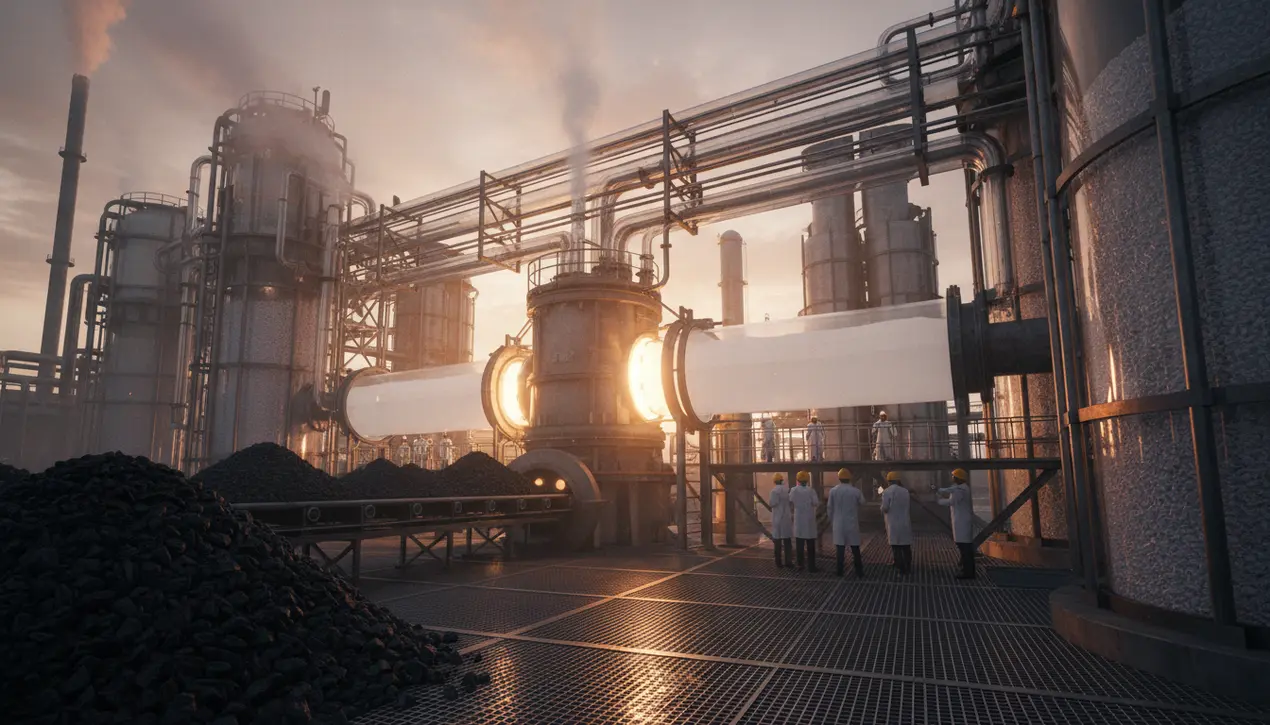
SciencechemistryGreen Chemistry
New Catalyst Efficiently Converts Coal to Plastic Materials
KE
Kevin White
3 hours ago7 min read
In a development that feels ripped from the pages of a near-future science fiction novel, a team of Chinese scientists has engineered a novel iron-based nanoparticle catalyst that fundamentally reimagines how we can utilize coal. This isn't about burning it for power; it's about transmuting it, alchemist-like, into the very building blocks of our modern material world—specifically, the olefins that form the backbone of ubiquitous plastics and synthetic rubber.The traditional, multi-step process for converting coal-derived syngas (a mixture of hydrogen and carbon monoxide) into these valuable hydrocarbons has long been a resource-intensive and inefficient bottleneck, often plagued by the infamous Anderson-Schulz-Flory distribution which limits control over the final product mix. What sets this new catalyst apart is its elegant molecular architecture, which cleverly couples two distinct catalytic reactions—methanol synthesis and the methanol-to-olefins (MTO) conversion—into a single, seamless, and synergistic process on a single catalytic site.This integrated approach bypasses the limitations of each standalone reaction, resulting in a dramatically higher selectivity for the desired light olefins like ethylene and propylene, while simultaneously slashing energy consumption and unwanted byproducts like methane. Imagine a factory where the chaotic, multi-departmental relay race of chemical production is replaced by a single, hyper-efficient, automated assembly line; that's the paradigm shift on offer here.From a biotech perspective, this catalytic precision is reminiscent of the kind of specificity we strive for with CRISPR-Cas9 gene editing—both are about directing a powerful, fundamental force (chemical reactions or genetic code) towards a highly specific, pre-determined outcome with minimal off-target effects. The implications for the global petrochemical industry are profound.While the world is tentatively transitioning towards renewables, the stark reality is that our dependence on plastics and synthetic materials is not diminishing, and the primary feedstock for their production remains naphtha from crude oil. This new catalyst offers a strategic pivot, allowing nations with vast coal reserves, notably China and the United States, to achieve a greater degree of energy independence and create a more resilient, diversified supply chain for essential materials.However, this 'coal-to-plastic' future is not without its significant ethical and environmental dilemmas. On one hand, it represents a more efficient and potentially cleaner way to extract value from a controversial resource, potentially reducing the carbon footprint per unit of plastic produced compared to legacy methods.On the other, it risks creating a powerful economic incentive to prolong the life of the coal industry, potentially locking in fossil fuel infrastructure at a critical juncture in the climate crisis. The ultimate test will be a lifecycle analysis comparing the total emissions—from coal mining and gasification to the final polymer pellet—against the incumbent oil-based pathway.Furthermore, the question of a circular economy remains paramount; creating plastic more efficiently is only half the battle if we fail to build the systems to recycle and reuse it, thereby perpetuating a linear 'take-make-dispose' model. The research, published in a leading scientific journal, is a stunning proof-of-concept, but the road from lab-scale triumph to industrial-scale deployment is long and fraught with engineering challenges, including catalyst longevity, reactor design, and economic viability at scale. Yet, it stands as a brilliant example of next-generation materials science, where nanotechnology and catalytic chemistry converge to solve one of industrial chemistry's most persistent puzzles, forcing us to confront the complex, intertwined relationship between resource utilization, economic progress, and environmental stewardship in the 21st century.
#featured
#catalyst
#coal
#syngas
#olefins
#plastics
#sustainability
#chemical synthesis
#Chinese research
Stay Informed. Act Smarter.
Get weekly highlights, major headlines, and expert insights — then put your knowledge to work in our live prediction markets.
Related News
Comments
Loading comments...
© 2025 Outpoll Service LTD. All rights reserved.